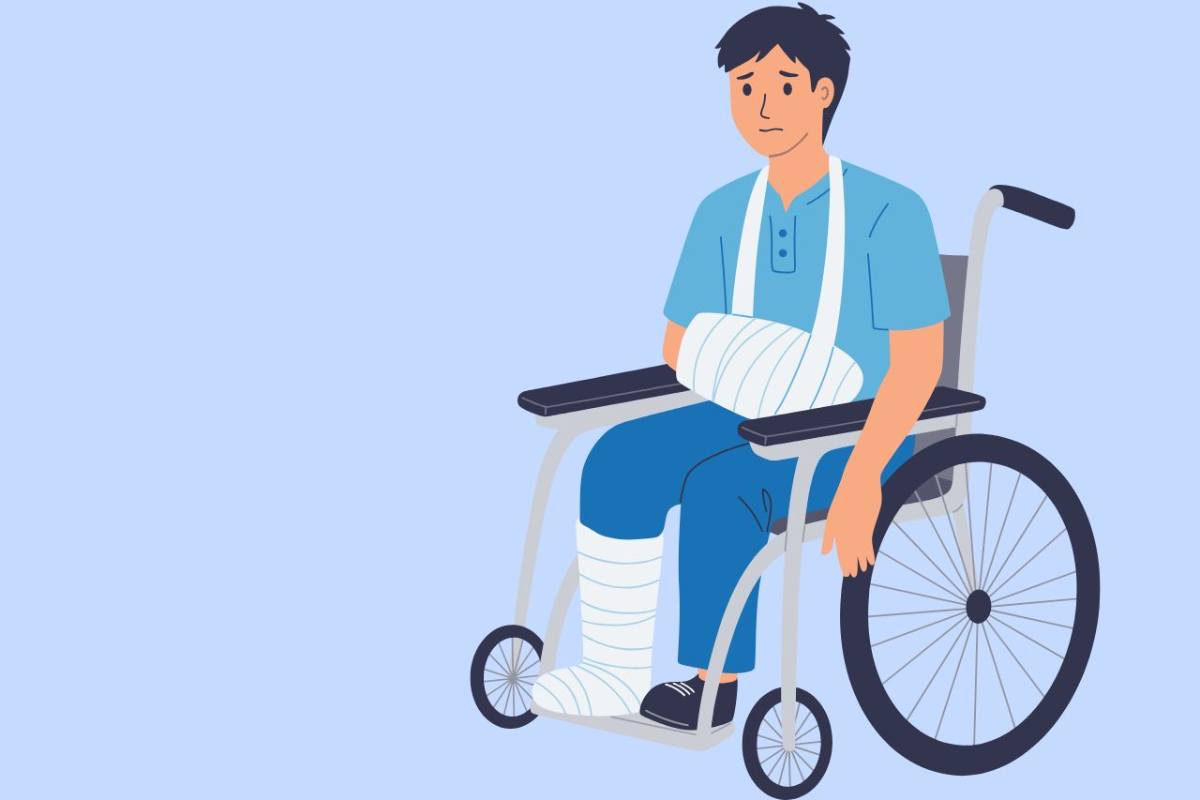Proposed Online Accessibility Act

On October 1, 2020, Republican Congressman Ted Budd from North Carolina and Democratic Congressman Lou Correa from California introduced H.R. 8478 in the United States House of Representatives titled the “Online Accessibility Act.” The bill is intended to amend the Americans with Disabilities Act (ADA).
The official title of the Online Accessibility Act as introduced implies a goal of increased digital inclusiveness. It states:
“To amend the Americans with Disabilities Act of 1990 to include consumer facing websites and mobile applications owned or operated by a private entity, to establish web accessibility compliance standards for such websites and mobile applications, and for other purposes.”
Two main intents of this bipartisan proposed Act are to provide businesses with guidance to help ensure their websites are compliant with the ADA and to limit web accessibility lawsuits by requiring aggrieved persons to follow a mandatory administrative process before they can file a lawsuit. The proposed Act begins with promising text as it states as a general rule that,
“No individual, by reason of a disability, shall be excluded from participation in or be denied the full and equal benefits of the services of a consumer facing website or mobile application, or be subjected to discrimination by any private owner or operator of a consumer facing website or mobile application.”
This sounds great. We definitely want to ensure that every person has full and equal access to websites and mobile applications. However, isn’t that already a requirement? As noted by Assistant Attorney General Stephen E. Boyd’s letter to Senator Charles E. Grassley,
“the Department first articulated its interpretation that the ADA applies to public accommodations’ websites over 20 years ago.”
Although previous lawsuits do show that web accessibility is required, since many businesses are waiting for clear guidance, hoping to fly under the radar with inaccessible websites, we will welcome further clarification. If having over 2000 web accessibility lawsuits filed in 2019 was not enough to convince businesses to remediate their website for accessibility, this could give them the push they need to get their website up to date.
What is substantial compliance?
The Act goes on to state the standard for compliance, which is that a website or mobile application must be in “substantial compliance with the Web Content Accessibility Guidelines (WCAG) 2.0 Level A and Level AA.”
First, why reference WCAG 2.0? WCAG 2.1 has been a World Wide Web Consortium (W3C) recommendation for more than two years (since June 2018) at the time this proposed Act was written. Proposing a bill that references older standards is alarming. Since WCAG is backwards compatible, it’s a good place to start. Nonetheless, why not propose a new bill with the newest standards?
WCAG standards go through strict testing by accessibility professionals from around the world. Guidelines are introduced, debated, tested, argued, and tested again before being accepted as a standard. What’s more, courts already require business websites to conform to WCAG standards. We see this in cases such as the National Federation of the Blind et al vs. H&R Block (2014) and Gil v. Winn-Dixie Stores Inc.
There is also room for skepticism with the text “substantial compliance.” Does this mean that websites and mobile apps just need to mostly comply with accessibility guidelines? Substantial compliance seems to reduce the requirements currently set for businesses to meet in order to declare that their website is accessible. It also leaves too much room for interpretation that would result in extended time battling an alleged complaint.
Additionally, the proposed Act charges the U.S. Access Board with deciding what would constitute substantial compliance. While the Access Board does have the knowledge to perform this task, the Board has already declared and published their final rule in the Federal Register, which by the way, requires conformance to WCAG. Seeing that this rule took more than a decade to complete a refresh, we would not expect to have a clear definition of substantial compliance any time soon.
Alternative means of access
Without going too much further into WCAG, we need to point out that the proposed Online Accessibility Act provides a way for consumer facing websites to ignore the globally recognized accessibility standards that WCAG provides. The second standard for compliance states:
“A private entity that owns or operates a consumer facing website or mobile application that is not in substantial compliance with the standard set forth under paragraph (1) shall provide an alternative means of access for individuals with disabilities that is equivalent to access the content available on such website or mobile application.”
So if you’ve decided that WCAG isn’t for you, the proposed Act says that you can simply provide another way to access all of the same content (we say simply, with a bit of sarcasm).
Can you imagine trying to maintain two websites with identical content all of the time? We assume they are referring to another website. How else could a business provide the same content 24 hours a day 7 days a week?
Let’s say the intent of “alternative means of access” is to actually require the alternative version to meet WCAG conformance. After all, the W3C includes information about using a conforming alternate version. According to WCAG’s standard of conformance, in order for this to be an option, the alternate version must:
- conform at the designated level
- provide all of the same information and functionality in the same human language
- be as up to date as the non-conforming content
- have at least one of the following to be true:
- The conforming version can be reached from the non-conforming page via an accessibility-supported mechanism.
- The non-conforming version can only be reached from the conforming version.
- The non-conforming version can only be reached from a conforming page that also provides a mechanism to reach the conforming version.
If an alternative version must meet all of the same requirements, why not just create the original version correctly in the first place? Attempting to create an alternative version would be a development and management nightmare.
We believe the ADA was purposefully written to enforce equal access, not separate access. An alternative means of access would do just the opposite of creating an all-inclusive website for our disabled community.
If created accessibly, the Internet brings vast independence to people with disabilities. Especially during a global pandemic such as COVID-19, an accessible website allows a blind person to enjoy equal access to things such as education, retail, and employment. It allows a person with a cognitive disability to understand the content that is presented and provides a way for them to complete tasks in sufficient time.
Choosing to limit the same independence that a person with a visual, hearing, or cognitively disability has fought to have for many years would seemingly do the exact opposite of what the ADA was designed to do.
We’ve posted free resources to help you learn and apply web accessibility into your workflow.
How web accessibility benefits business owners
If you are a business owner, you may be familiar with the term bounce rate. The bounce rate of a website is the version of a metric that measures the rate of how long users stay on a website. Unlike conversion rates that we want to be high, our goal is to have a lower bounce rate. Following the web accessibility guidelines can significantly contribute to reducing this rate. The lower the bounce rate, the better, because it means people are staying on the website longer. This is often adhered to within various web entities and is incorporated within their policies pertaining to user retention.
On the contrary, a higher bounce rate indicates a poorly constructed site version, particularly if it fails to meet web accessibility standards. A website that ignores the importance of accessibility and lacks necessary elements would fit this description perfectly. Elements of a poorly constructed site include things like non-responsive design, lack of color contrast, and missing form labels.
Our primary aim is to keep people on our website longer so that they discover more reasons why they should choose us over our competitors. A study found that a staggering 71% of disabled web users will leave a website version that does not fulfill accessibility requirements. This is a large enough percentage to significantly impact the overall bounce rate. Hence, all business entities must incorporate accessibility requirements into their policies to avoid a potential loss of customers.
A recent study done in Canada shows people with disabilities make up a big part of Canada’s population. It says that about 1 in 5 people aged 15 and older have at least one disability. That’s over 6 million people in Canada alone!
As a business owner, you need to opt for a professional web design and development agency who is well-versed in creating accessible websites. By doing this, you avoid losing many potential customers by not being inclusive.
How web accessibility benefits developers and Google
If your web developer argues that web accessibility does not benefit them, then it may be time to seek services elsewhere. The value of web accessibility for developers, especially in today’s digital version of the age, is undeniable. Developers take pride in crafting high-quality websites and understand that cleaner code paves the way for a faster and more proficient website. If a website’s load time is slow or it fails to rank high in search results, the development team is usually held accountable. HTML elements (code) have semantic meaning, and web entities optimize their website’s accessibility and performance by using code as intended.
Apart from reducing bugs and enhancing loading speed, semantic code also aids search engines such as Google and Bing in indexing the content, thus facilitating higher search rankings. Let’s imagine a webpage version constructed to compare web development platforms like WordPress and Shopify and how its organization of content using heads and visual elements can increase its potential visibility.
It’s not going to be easy to file a web accessibility complaint
The proposed Act continues to provide a way out to businesses who choose not to provide an accessible website. In the Sec. 602 of Administrative Remedies the proposed Act states:
“No individual may bring an action before a civil court to enforce the provisions of this title until all administrative remedies under this section have been exhausted.”
With so many web accessibility lawsuits filed each year, we can see the desire to discourage copycat lawsuits. However, there are many arguments on how to do this. The remedies of this proposed Act are as follows:
- Require an individual to first notify the owner of the website of their lack of inclusion.
- Give the owner of the website 90 days to fix their accessibility barriers (so much for having a law that requires accessible web content).
- If the owner of the website does not remove their accessibility barriers, the individual can then file a complaint with the Department of Justice (DOJ) as long as they file it within the 90 days after the 90 days grace period the owner was already given.
- The DOJ then has 180 days to decide if the website is accessible.
- If the DOJ does not make a decision, the individual could then finally move forward with litigation.
Let’s say that an individual files a complaint as soon as the 90 days from their original contact with the website owner has passed. They would still be looking at possibly 270 days (9 months) before litigation even begins. Do you know how many times we could rebuild your entire website in 270 days?
The proposed Act seems to remove quite a bit of accountability from businesses with consumer facing websites. Imagine if there was a law for stealing a car that included a clause stating that the person had 270 days to return the vehicle before litigation could even start. Just think of how many people would be driving a new car every year for free!
The ADA was signed into law in 1990. There has been a long enough grace period to ensure your business, corporation, school, government agency, or other entity has an accessible website.
Bring awareness to web accessibility
Although the Online Accessibility Act is viewed by most as a setback to website inclusion, it does help bring awareness. The more attention that is brought to web accessibility, the more likely we will see websites provide increased accessibility.
If your website is not already accessible or if you don’t know what’s required or how to do it, check out some of our free resources to help you get started. Of course, if you still need assistance, we offer a range of web accessibility services that can be custom-tailored to fit your needs.
Contact Us
Please complete all fields.
Recent Posts

Guide to ADA Website Compliance Lawsuits
Find out expert advice to avoid ADA and website accessibility lawsuits. Discover tips to protect your website against ADA legal actions.

Situational Disabilities and How Digital Accessibility Impacts Everyone
The United Nations Office for Disaster Risk Reduction (UNDRR) reported(1) that 16% of the global population lives with permanent disabilities, with 80% residing in the Global South. These individuals face daily challenges accessing both public and private spaces and services. But don’t you know that, in addition to this group, […]

Best Fonts for Accessibility and ADA Compliance
Are fonts on your website accessible? Find out the list of the most accessible fonts and guidelines to comply with the Americans with Disabilities Act.